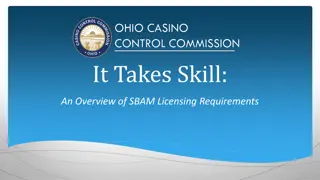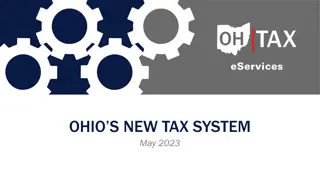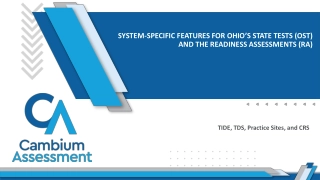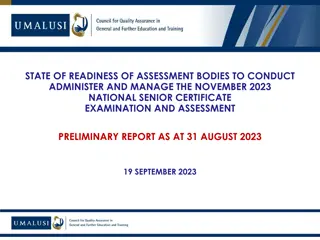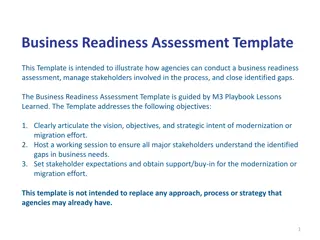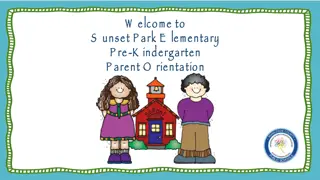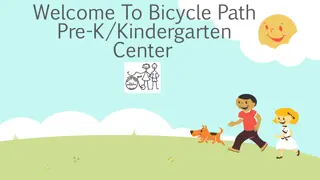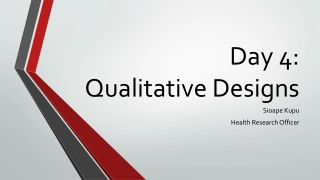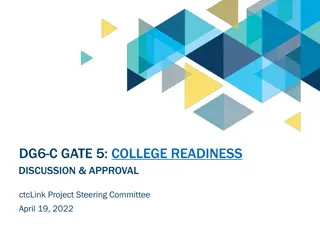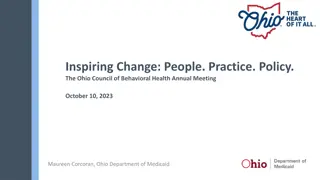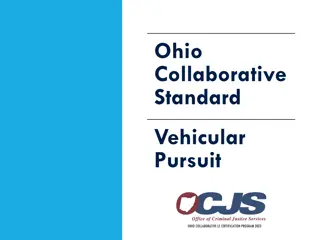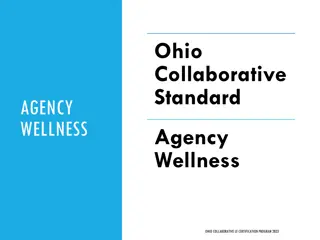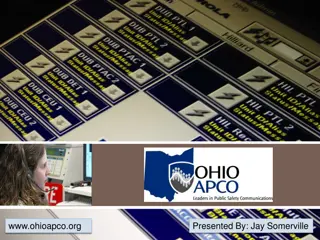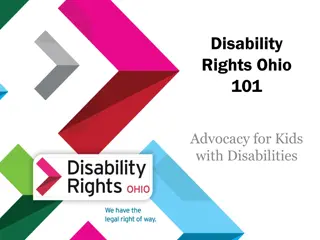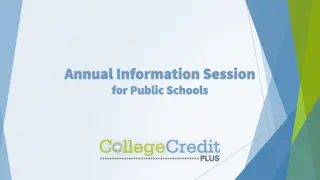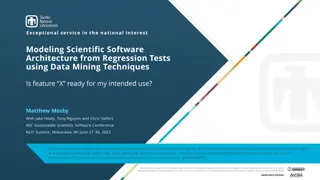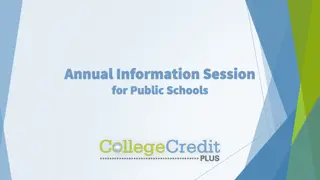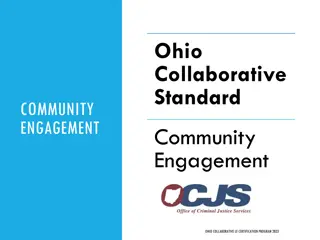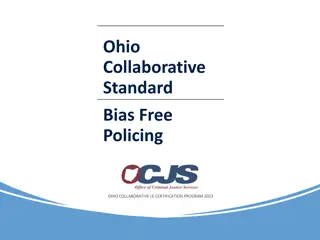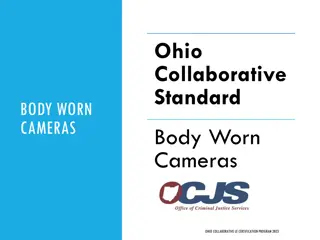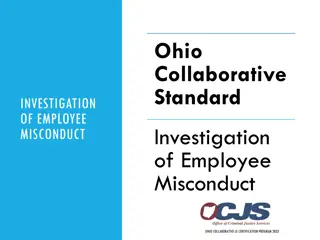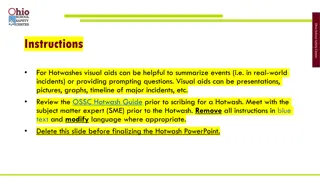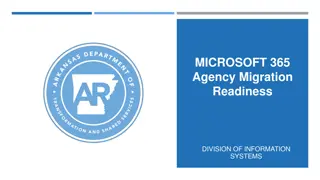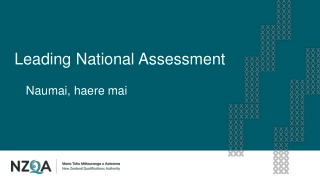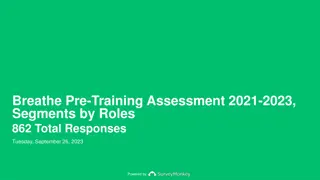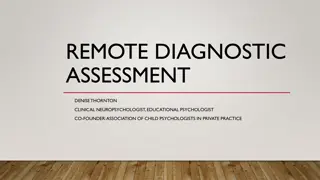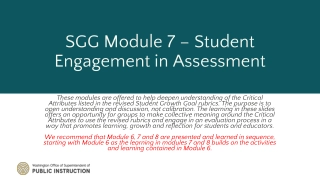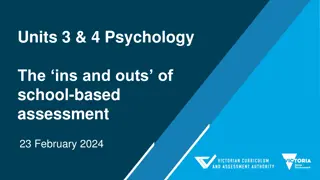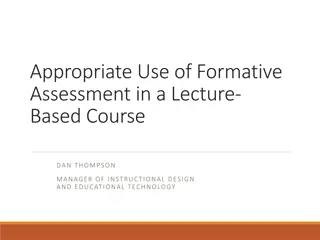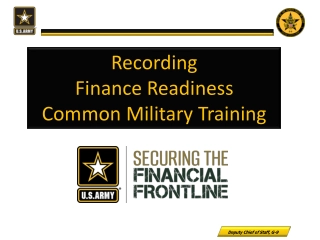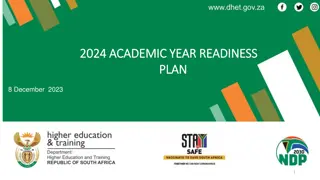Understanding Ohio’s Kindergarten Readiness Assessment
Learn about Ohio's KRA-R, a vital assessment for kindergarten readiness in public and community schools. Discover how the assessment helps stakeholders on different levels and why it is crucial for children's academic success. Explore the areas measured and the interactive nature of the assessment process.
Download Presentation

Please find below an Image/Link to download the presentation.
The content on the website is provided AS IS for your information and personal use only. It may not be sold, licensed, or shared on other websites without obtaining consent from the author. Download presentation by click this link. If you encounter any issues during the download, it is possible that the publisher has removed the file from their server.
E N D
Presentation Transcript
Who? Public school districts and community schools are required to administer the Ohio Kindergarten Readiness Assessment Revised (KRA-R) to all first-time kindergarten students at the beginning of each school year. Ohio s KRA-R is for all students enrolled in a public school and those chartered nonpublic schools that have opted in to participate in the assessment. All students in public and community schools are required to participate in the KRA-R and have their results be part of the state s summary reports. Exceptions: Retained students and those that enroll after the 20th day of instruction.
Why? Ohio s KRA-R is intended to be used by teachers to improve outcomes for all kindergarten children enrolled in public or community schools. The purpose of the KRA-R is to provide information to stakeholders at the local, regional and state levels about how well-prepared children are for kindergarten. Aggregated assessment reports available in the Ready for Kindergarten Online system at the individual, classroom, school and district levels facilitate use of the KRA-R to inform policy, research and educational decisions. Families, caregivers and kindergarten teachers will learn about each child s skills, learning and developmental needs, so teachers can identify strengths and areas of support needed for each child. The results provide a measure of a child s level of readiness for instruction in kindergarten standards. The results, coupled with other information about the child, inform decisions about instruction in kindergarten. Performance on the KRA-R cannot be used to prevent or prohibit a child from remaining in kindergarten. Research has shown that how prepared children are when they first enter school is a strong predictor of success in future grades. Demonstrating readiness for kindergarten means that children are prepared for today s kindergarten curriculum. Children who demonstrate age-appropriate knowledge, skills and behaviors in math, reading and social interaction at the start of kindergarten are more likely to continue developing on track throughout their academic careers. Children who demonstrate school readiness are more likely than their peers to experience later academic success, attain higher levels of education and secure employment.
What? The KRA-R measures school readiness based on Ohio s Early Learning and Development Standards (birth to kindergarten entry). The assessment measures a child s knowledge and abilities across four areas: Social Foundations, Language and Literacy, Mathematics, and Physical Well-Being and Motor Development. The KRA-R is not a traditional paper and pencil test. Instead, it includes a variety of items, including teacher s observations of daily activities and age-appropriate performance tasks in which the teacher asks a child to respond to a question or complete an activity. Selected response and performance task items contained in the Language and Literacy and Mathematics sections require the teacher and student to interact directly. Observational rubric items do not require the teacher and student to interact directly. Rather, each student is observed in the classroom and other school settings and scored accordingly, based on the descriptors in each observational rubric item.
When? Districts administer the KRA-R at the beginning of a child s kindergarten year. The administration window is set in statute (Ohio Revised Code 3301.0715). More information about the assessment window is available at education.ohio.gov/KRA. The KRA-R is a flexible tool that is designed to be embedded in a typical kindergarten day. The KRA-R does not have to be completed all at once.
Where? Different parts of the KRA-R can be administered in different settings. Some items are best completed at a table or desk in a classroom or library. Other items may be completed in a computer lab. Observational items may be completed anywhere in the school.
How? Teachers have options for how to administer the KRA-R. For example, some items can be given via a tablet or computer rather than using printed materials. Teachers have the discretion for starting and stopping an item and/or section during the administration window. Teachers also have flexibility in planning for how, where and when the observational items fit with what they already are doing in their instructional day. Teachers score observational items using information obtained by watching students participating in school activities and interacting with other students. Observational evidence is best recorded during live classroom activities. However, if a teacher needs additional rubric scoring time, video evidence may be obtained and scored later with the following conditions being met: *Teachers must obtain approval from an administrator. *The district ensures that appropriate parent permission is obtained and documented prior to video recording that addresses recording, storage and distribution of video evidence, as applicable. *It is not permissible to record audio, video or photos of any Kindergarten Readiness Assessment - Revised items or materials. The KRA-R is primarily administered verbally in English with student visuals and manipulatives. A tiered decision-making process has been developed for differentiating administration of the assessment. This process begins with utilizing universally designed allowances, which are supports that are appropriate to provide to any student. Universally designed allowances encompass the range of actions, material presentations, procedures and settings that are acceptable for use with all students. The universally designed allowances include allowances in directions, item presentation, student response, setting and scheduling. Additional supports are available for English learners and students with disabilities including a braille version and an American Sign Language translation.
Universally Designed Allowances Read directions aloud and repeat as many times as needed, either by request of the student or as determined by the teacher. Important: When repeating directions, teachers should not deviate from the item s script. Pause while reading directions to ensure the student is attending. Redirect the student s attention to an item or a direction. Directions Provide magnification or enlargement of the test items (as many as needed). Change the position or orientation of materials to maximize the student s visual engagement (e.g., hold the stimulus booklet at a vertical angle instead of placing it flat on a table). Provide audio amplification for verbal directions. Provide physical support that maintains all possible answer choices for a given item to improve visual acuity. For example, use color contrast overlay. Allow the student to retake an item, as determined by the teacher, at any point within the test window if the teacher determines that the student s performance was not indicative of his or her typical level of functioning (e.g., due to illness). Item Presentation Allow the student to point to or verbally indicate a response for an item that asks the student to touch the correct response. Allow the student to indicate a corrected or changed response. Encourage a response from the student as long as the encouragement is not used as a cue. Student Response Assess the student in a familiar, comfortable location in the classroom or school. Allow the student to move and change locations during a test session. Change the lighting. Change the arrangement of the furniture, including allowing the student to stand during a direct assessment activity. Provide noise buffers. Assess in a setting with minimal visual distractions. Setting Use teacher discretion for starting and stopping item and/or section administration. Allow the student to initiate starting and stopping item and/or section administration. Give as much time as needed to complete an item, unless otherwise indicated in the item directions. Provide breaks as needed. Scheduling
Level the Field Supports Students with Disabilities English Learners All Items Selected Response/ Performance Task Item Observational Rubric Item Consider multiple modes for demonstrating skills and behaviors if the item implies verbal or spoken language, such as observational rubric items that use the words express, suggest, communicate, ask, or tell. *Use braille to present item content, when appropriate. *Do not penalize the student for the use of varied materials that allow the student to demonstrate the skill independently as stated in the item (e.g., adapted writing utensils). *Use sign language to administer the item to a student who is deaf or hard of hearing and uses sign language as his or her mode of communication. Accept multiple means of expression by allowing the student to point to, gesture toward, or touch a response instead of or in addition to providing a verbalized response. *The student can use any of the following modes of communication to demonstrate skills and behaviors that imply verbal or spoken language, such as items that use the words express, suggest, communicate, ask, or tell: Sign language (including approximations). Digital language (e.g. use of an augmentative communication device). Gestural language (e.g. head nod, eye gaze). *Allow the student to gesture toward, touch, use eye gaze, or otherwise indicate a response through whatever dominant communication mode/language he or she utilizes, including sign language, sign language approximations, and digital language (e.g., use of augmentative communication device, allowing the student to show versus tell ).
Not Scorable Recording Performance Data 1. Record Not Scorable for the item in Ready for Kindergarten Online. 2. Use the item s comment box to explain why the item was Not Scorable. Also, look for the skill in naturally-occurring routines and activities and record information/observations useful for instructional decision-making. 3. Continue to the next item. Determining when to pause administration of a domain: When three items (not necessarily consecutive) are marked as Not Scorable, the teacher is advised to pause administration pending a review of the remaining items in the domain by the student s instructional team. Note the difference between Not Scorable and a score of 0 on an item. Not Scorable means the teacher was not able to score the item because the child could not access it given allowable supports. A score of 0 means the child was able to access the item but did not demonstrate the skill according to the scoring criteria. If it is determined that the student should not continue to be assessed in that domain, the remaining unanswered items should be marked as Not Scorable (DO NOT leave as Needs to be Administered ) in that domain.
Third Grade Reading Guarantee We annually assess the reading skills of each student in grades K-3 at the beginning of the year (or upon enrollment) by administering: KRA-R (Language and Literacy Domain) for any kindergarten student that enrolls within the first 20 days of school i-Ready Diagnostic within 30 days of enrollment (1st-3rd grade and any kindergarten student that is retained or enrolls after the KRA-R deadline) The results of the reading diagnostic determine whether a child is on- track or not on-track in reading. (The KRA-R on-track cut score is 263.) Students (K-3) that are not on-track per the established cut score chart will qualify for a Reading Improvement and Monitoring Plan (RIMP).
KRA-R: Family Support https://oh-ost.portal.cambiumast.com/families.html
KRA-R: Family Support https://oh-ost.portal.cambiumast.com/families.html
KRA-R: Family Support https://oh-ost.portal.cambiumast.com/families.html
KRA-R: Family Support https://oh-ost.portal.cambiumast.com/families.html
Contacts Division of Assessment and Data Literacy Ronda Welch Director of Testing (614) 365-5785 Rachel Hopewell Value-Added & Assessment TOSA (614) 365-7641 Jade Scriven Secretary (614) 365-5785



